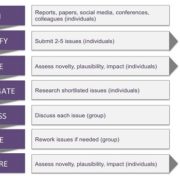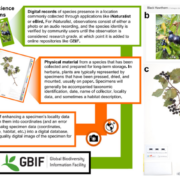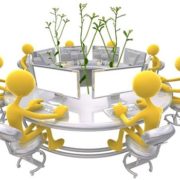Veg-A-Sketch
Painting Plants with Light
I would like you to take a moment and reflect back on your memories of plant science in elementary school…
For many of us, not much will come to mind. Science curriculums often do not elaborate on plant science beyond photosynthesis. However, photosynthesis is certainly not the only relationship plants have with light! But what else is there? How does light affect plant biology? These are scientific concepts that I hope to introduce to a young audience in a creative way.
Pigmentation removed by green light applications
So how do we demonstrate that plants are interesting, or maybe even super cool? My mentor Dr. Kevin Folta and I invented a kit for the classroom that does just that: Veg-A-Sketch.
What is Veg-A-Sketch?
It is a fun and basic method to illustrate principles of how light affects plant traits. Developed at the University of Florida, this experiment kit is distributed to students (at no cost!) in order to promote a better understanding of plant/light relationships.
It has been known for a long time that light provides information to plant cells that guides their shape, size, and function. A key concept Veg-A-Sketch applies is that specific wavelengths (colors) of light can stimulate the production of pigments in plants, while other wavelengths make them go away. All visible light stimulates the production of the green pigment chlorophyll. Generally speaking, blue and UV light activate the production of protective purple pigments, called anthocyanins. Anthocyanin accumulation is induced by blue light acting through the cryptochrome photoreceptors. Cryptochrome receptors are also influenced by green light, which at least can partially reverse the blue light response in many plants.
Stencils are applied to the green light-treated leaves. Blue or white light can be applied to induce cell-autonomous accumulation of anthocyanins.
Veg-A-Sketch began as I was researching the genetic potential of various plants to respond to different wavelengths of light. After surveying a large number of red lettuces under different light environments, several varieties were identified that showed significant pigmentation plasticity. Next we developed a regime in which these lettuce were grown under constant green light to produce healthy, expanded green leaves with little anthocyanin pigment. Lastly we covered the lettuce with a stencil and applied a blue light treatment to induce anthocyanin accumulation.This treatment on the stenciled lettuce leaf produced pigments in discrete areas where light was applied. Essentially, painting leaves with light.
The visual aspect of this experiment made it a great activity for the classroom. Our lab has a large interest in outreach education and it seemed as though we had the perfect match. So after repeated trials with many lights, filters and stencil supplies, we were able to put together a kit for students that takes them step by step through this same experiment.
The supplies are provided free of charge.
Leaves as canvas, Light as brush, Pigment as paint:
Teachers are provided one kit for every 3-4 students. The instructions walk students through all parts of the experiment, from planting seed to harvest. Together in groups, the students germinate and grow their seedlings, construct a “light box” with green filters and create a design by stenciling. The entire process takes an average of 35- 45 days, depending on the light source intensity and other variables.
Why it matters:
Teachers are encouraged to incorporate this experiment into their curriculum and navigate questions such as “What is light?” or “What are some effects of light on plant traits? (leaf shape, pigmentation, nutrition, yield, flavor, growth rate).The purpose of Veg-A-Sketch is to demonstrate concepts in phenotypic plasticity, photoreceptor function, and light-mediated plant physiology. This experiment will hopefully guide students into discussions about horticultural professions and also showcase what can be achieved through studying plant sciences.
Ultimately, our biggest goal is to spark more interest in the world of plant biology for the next generation!
Connect with us on Twitter #playwithyourfood
Contact Lauren Plotnik at [email protected] for inquiries










Leave a Reply
Want to join the discussion?Feel free to contribute!